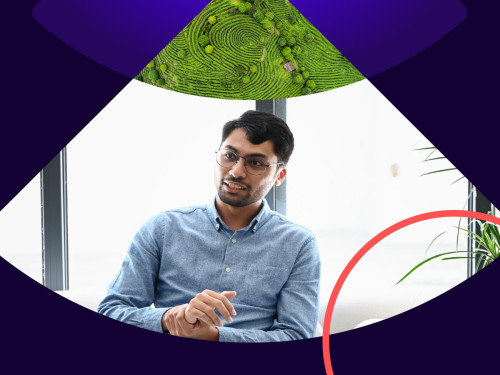
Digital Day 2023: Demystifying electronic signatures
Recap of the second session of Digital Day, where we answered all the big questions about electronic signature and what to consider when choosing a solution.
- Docusign’s annual webinar event, Digital Day, was a big hit. You can catch-up on all the action or read on for our recap of the second session: ‘Reduce risk and enhance customer experience with Docusign’, presented by Jennifer Launchlan, Industry Lead - ANZ Financial Services and Marcus Hannah, Senior Legal Counsel, Docusign.
Table of contents
- Docusign’s annual webinar event, Digital Day, was a big hit. You can catch-up on all the action or read on for our recap of the second session: ‘Reduce risk and enhance customer experience with Docusign’, presented by Jennifer Launchlan, Industry Lead - ANZ Financial Services and Marcus Hannah, Senior Legal Counsel, Docusign.

Docusign’s annual webinar event, Digital Day, was a big hit. You can catch-up on all the action or read on for our recap of the second session: ‘Reduce risk and enhance customer experience with Docusign’, presented by Jennifer Launchlan, Industry Lead - ANZ Financial Services and Marcus Hannah, Senior Legal Counsel, Docusign.
Electronic signatures are used more than ever before, for everything from standard contracts to marriages. Yet, despite their broad adoption, we still get asked how they work. Our second session of Digital Day for 2023 was all about demystifying the wonderful world of electronic signatures.
First, what is an electronic signature?
Essentially, ‘electronic signature’ is a broad term for any electronic process where a person agrees to be bound by the terms of an agreement. This electronic process can be a trackpad- or mouse-generated scribble, a font-generated signature, a photo of a handwritten signature, or even just the click of a button that says ‘I accept’.
Ultimately, it is the intent to agree which matters — not the actual mark on the document.
Are electronic signatures safer than wet signatures?
Yes, they are. Yet some people still think that wet signatures are somehow safer. In reality, wet signatures can be easily forged and physical documents can be tampered with even after they've been signed. On the other hand, an electronic signature has added layers of security and provides a lot more information and assurances regarding the entire signing process.
There are three key features that make electronic signatures safer:
Robust authentication methods. Authentication is a way of identifying or validating that the signer is who they say they are. Two-factor authentication or ID verification are examples here.
An audit trail. This captures additional information around the time and experience of signing, and can be used to validate a transaction’s authenticity (more on this below).
Tamper-evident seal. A signature technology like Docusign digitally seals the document using public key infrastructure (PKI), which indicates that the document hasn’t been tampered with or altered since the date of signing and that the electronic signature is still valid. This is far superior to a wet-signed document, where pages could be swapped out or altered.
In a court of law, are all electronic signatures equally enforceable?
No, they're not. When choosing an eSignature platform, you need to consider how much evidence the platform provides as part of its audit trail. You need to ask yourself (or get your lawyers to answer) if the signed agreement would stand up in the court of law.
Docusign has been repeatedly tested in courts of law, and is firmly established as a reliable tool to ensure that agreements are legally enforceable. It offers many options for authenticating a signer’s identity upfront — from basic (like SMS authentication) to advanced (like Docusign Identify).
Unlike ‘no frills’ electronic signature solutions, the Docusign Certificate of Completion provides a full audit trail of all the signature-related actions taken in the document — like, when it was opened, viewed and signed, as well as specific details around each signer including their consent to sign electronically. The record includes timestamps, their IP address, and other identifying information; as well as a symbol showing the tamper-evident seal is intact.
What about capturing a signer’s consent to use electronic signature?
After a signer is authenticated, the next step that’s embedded into the Docusign workflow is for the signer to consent to using electronic records and signatures. This aligns with the Electronic Transactions Act, which requires that each signer consents to the use of electronic signing methods. Then consent is captured and recorded with the signed document and, if necessary, can be laid out as evidence of compliance with the law.
Speaking of Acts, what are the electronic signature laws in Australia and New Zealand?
There’s been a lot of reform recently — particularly since Covid — to allow more documents to be signed electronically. Regulators and the community have become a lot more comfortable with the idea that eSignatures are not only convenient and reliable, but can also provide other benefits over a wet signature.
Generally, Australian and New Zealand law recognises that most agreements or contracts can be signed electronically. However, there are other laws that also govern electronic signatures, such as the Corporations Act and state-based conveyancing laws, which may apply depending on your specific use case.
There are other considerations that also come into play when determining if a document can be signed electronically — including the local legislation, the type of agreement being signed, and the capacity or authority of the signers. It can also depend on who is receiving the document and their internal policies. Given these factors, it’s always important to seek legal advice for your own specific use case.
Ready to get started?
Docusign eSignature is the world’s number one way of signing electronically on practically any device from almost anywhere and at any time. More than a million organisations worldwide have adopted Docusign to do business faster, simpler and more cost effectively, while delivering a better customer experience.
For advice on best practices and where to start, get in touch for an obligation-free chat. Or, to learn more about how Docusign is helping businesses transform, watch out for the next blog in our Digital Day series or watch all the webinars on-demand now.
Related posts
Discover what's new with Docusign IAM or start with eSignature for free


